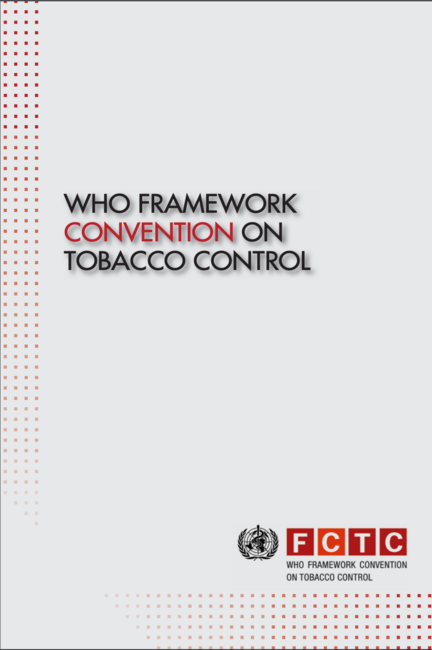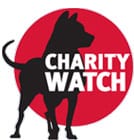What is the WHO Tobacco Treaty (i.e. the FCTC)?
 The World Health Organization (WHO) Framework Convention on Tobacco Control (FCTC) is a treaty that was formally negotiated by all Member States of the United Nations under the auspices of the World Health Organization, a subsidiary body of the United Nations, through consensus and adopted as an agreement between countries.
The World Health Organization (WHO) Framework Convention on Tobacco Control (FCTC) is a treaty that was formally negotiated by all Member States of the United Nations under the auspices of the World Health Organization, a subsidiary body of the United Nations, through consensus and adopted as an agreement between countries.
The FCTC was negotiated from 2000 to 2003. After negotiations were finalized, it was unanimously adopted by the World Health Assembly (the decision-making body of the WHO) in May 2003. The FCTC came into force (i.e., became legally binding to the countries that joined it) in February 2005, 90 days after the fortieth nation ratified (i.e. gave formal consent to become a Party to the treaty).
Currently, the FCTC has been joined by 183 Parties (182 countries and the European Union which has joined as a regional block). The United States has not joined.
How is the FCTC governed?
The FCTC is governed by the Conference of the Parties (COP), which consists of all Parties (i.e., those that have joined the treaty via ratification or accession). The COP convenes every other year. The COP meetings are numbered; for example, the most recent was COP10.
Countries like the U.S., who have signed but not ratified the FCTC, as well as inter-governmental organizations such as the World Bank can attend the COP as non-voting Observers. The COP can grant Observer status to civil society organizations. Action on Smoking and Health was granted Observer status and can attend COP as a non-voting Observer.
How are the FCTC Guidelines developed and used?
FCTC Guidelines have been developed through wide consultative and intergovernmental processes and adopted by consensus during COP. The Guidelines developed to date provide evidence-based direction and help Parties meet their legal obligations under the FCTC.
While we are lucky to have evidence-based Guidelines, it is important to remember they are not merely technical documents; they are documents developed and adopted through intense international negotiations and agreement.
A key example of FCTC Guidelines often used by ASH are the Guidelines for Implementation of Article 5.3.
“Principle 1: There is a fundamental and irreconcilable conflict between the tobacco industry’s interests and public health policy interests.
The tobacco industry produces and promotes a product that has been proven scientifically to be addictive, to cause disease and death and to give rise to a variety of social ills, including increased poverty. Therefore, Parties should protect the formulation and implementation of public health policies for tobacco control from the tobacco industry to the greatest extent possible.”
ASH quotes Principle 1 of the Article 5.3 Guidelines in countless advocacy documents, in particular our U.S. Tobacco Industry Interference Index and our U.S. Tobacco Industry Lobbying and Lobbying Firm Registration Tracker, both of which call on policymakers to avoid interactions with the tobacco industry when implementing public health policy.
How are FCTC COP Decisions reached and used?
FCTC COP formal Decisions are negotiated at each COP. The Decisions provide direction to FCTC Parties on how to implement best practices in tobacco control and give a mandate to the FCTC Secretariat on work to be done between COPs.
Advocates around the world use COP Decisions to encourage Parties to take action to strengthen their tobacco control policies.
Key Decisions from COP10 include:
What is the purpose of FCTC COP Declarations?
Declarations are a final visionary, motivational, summary statement that is adopted at the end of most COPs. The Declaration drafting process is often led by and named for the host country of that COP.
The goal of a Declaration is to link the outcomes of that COP with other UN mechanisms and processes while providing forward looking appeals for Parties.
What is the Protocol to Eliminate Illicit Trade (the Protocol or ITP) in Tobacco Products?
The Protocol to Eliminate Illicit Trade in Tobacco Products (the Protocol) is a separate treaty negotiated by countries that are Parties to the FCTC. Only countries that have ratified the FCTC can ratify the Protocol.
The Protocol was negotiated over several years, and the treaty text was finished (i.e. adopted) in November 2012. The Protocol was opened for FCTC Parties to sign and ratify on January 10, 2013. The Protocol entered into force on September 25, 2018.
The Protocol is legally binding for all its Parties.
Just as the FCTC is governed by the COP, the Protocol to Eliminate Illicit Trade in Tobacco Products is governed by the Meeting of the Parties (MOP) which is made up of all Parties to the Protocol. The MOP meets immediately after each COP.








